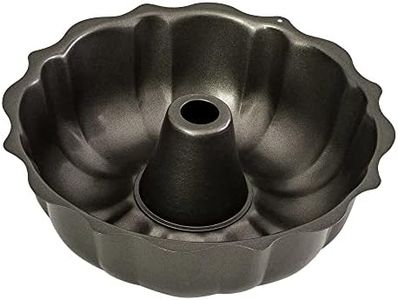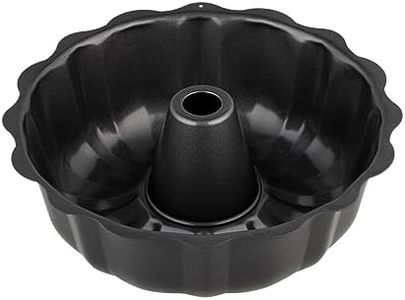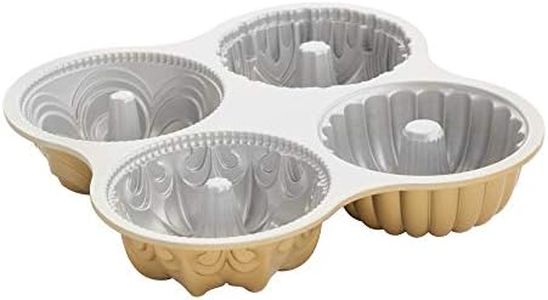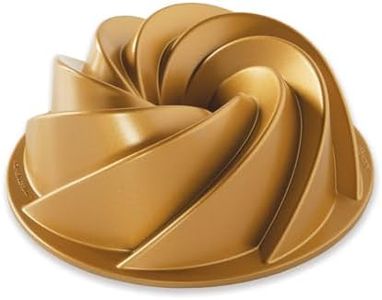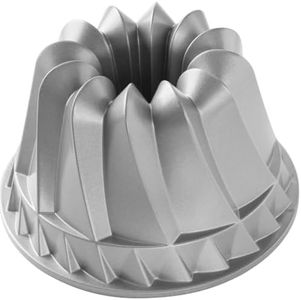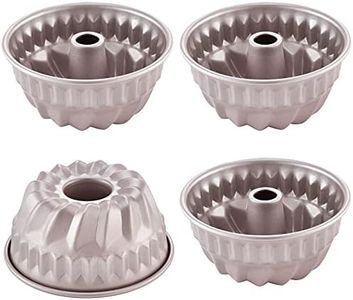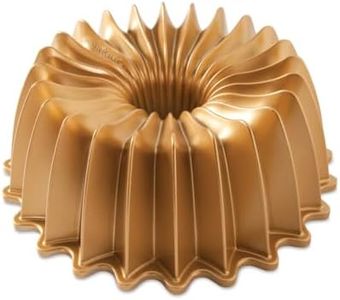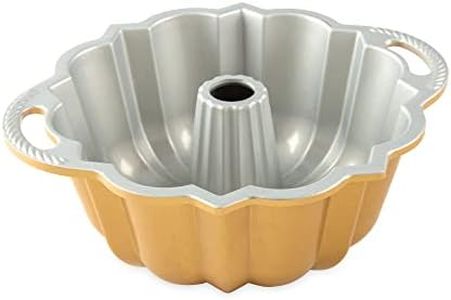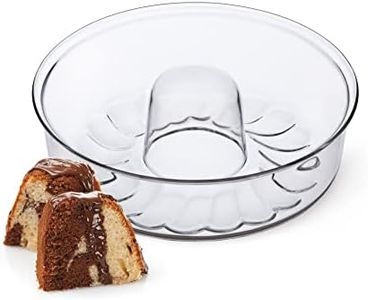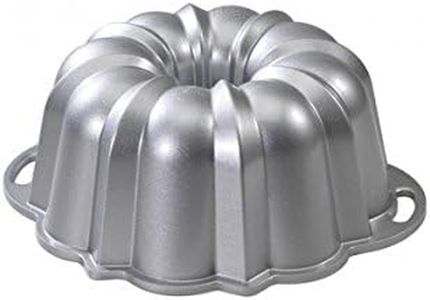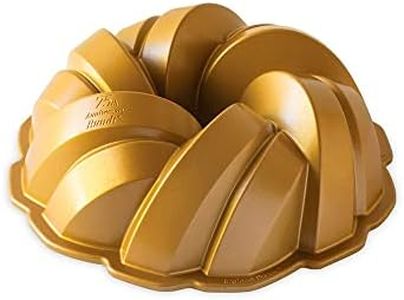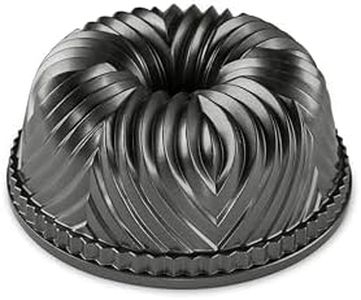We Use CookiesWe use cookies to enhance the security, performance,
functionality and for analytical and promotional activities. By continuing to browse this site you
are agreeing to our privacy policy
10 Best Bundt Cake Pans
From leading brands and best sellers available on the web.Buying Guide for the Best Bundt Cake Pans
Choosing the right bundt cake pan can make a big difference in how your cakes bake and look. Whether you're a beginner or an experienced baker, it's important to understand the key features that affect the performance and results of these pans. By considering the important specifications, you can pick a pan that makes it easier to bake cakes that come out beautiful, evenly cooked, and easy to remove from the pan.MaterialBundt cake pans are commonly made from materials like aluminum, silicone, or nonstick-coated metals. The material affects how heat is distributed during baking and how easy it is to clean the pan afterward. Aluminum pans heat up quickly and distribute heat evenly, helping cakes bake uniformly, but may require greasing for easy release. Nonstick coatings make it easier to release the cake and clean up, but they can wear off over time. Silicone is flexible, so cakes come out easily, but it may not brown the cake as much as metal. If you want even baking and a golden exterior, go with metal; for easy cake removal and cleaning, nonstick or silicone can be helpful. Choose based on whether you prioritize easy removal, browning, or even baking.
Size and CapacityBundt pans come in various sizes, usually measured by cup capacity (like 6-cup, 10-cup, or 12-cup). The size affects how much batter you can pour in and how much cake you'll end up with. If you bake for large groups, a bigger pan is better; for small families or single servings, a smaller pan works great. Standard recipes often use a 10 or 12-cup pan, so check your favorite recipes and pick a pan with matching capacity to avoid overflows or flat cakes. Always make sure your chosen pan fits in your oven and matches the amount you usually bake.
Shape and DesignBundt cake pans are known for their decorative shapes and patterns, from simple fluted rings to intricate designs. The design affects the final look of your cake and how easy it is to release from the pan. Simple designs are easier for beginners and lower the chance of the cake sticking, while elaborate patterns make stunning presentations but may need extra greasing. Pick a pan with a design that matches your intended look and your confidence level in preparing the pan properly.
Ease of CleaningSome bundt pans have lots of crevices and details, which can make cleaning tricky. Nonstick pans and simpler designs are easier to clean by hand or sometimes even in the dishwasher. If you want less cleaning hassle, look for pans with smooth surfaces and nonstick coatings, and avoid extremely intricate shapes unless you're willing to spend extra time cleaning.
DurabilityDurability refers to how well the pan can withstand regular use, washing, and changes in temperature. Metal pans (especially aluminum) are usually the most durable and resistant to warping, but nonstick coatings and silicone may lose their effectiveness over time with heavy use. If you plan to bake often and want a pan that will last for years, choose a sturdy metal pan. Occasional bakers might be fine with silicone or less heavy-duty options.
